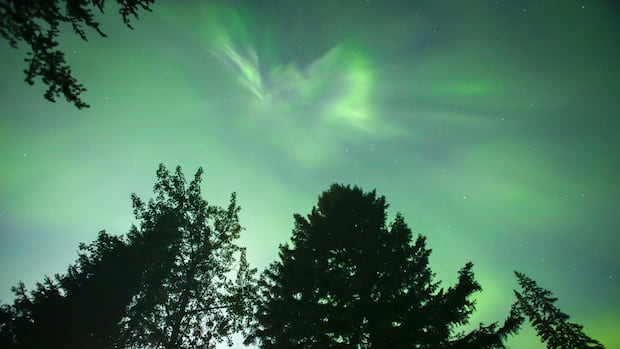Space weather forecasters have issued a warning about severe solar storms heading towards Earth, which could result in vibrant northern lights and temporary disruptions in communications. The recent activity on the sun has led to multiple bursts of energy known as coronal mass ejections, expected to arrive on Tuesday night and into Wednesday.
The potential geomagnetic storms could impact radio and GPS communications, according to experts from the U.S. National Oceanic and Atmospheric Administration (NOAA). NOAA’s Space Weather Prediction Center mapping indicates that the colorful auroras may be visible across most of Canada on both Tuesday and Wednesday nights, extending into several U.S. states.
The intensity and extent of the auroras will depend on the timing of the solar bursts reaching Earth and their interaction with the atmosphere. This surge in solar activity is occurring as the sun reaches the peak of its 11-year cycle, increasing the frequency and distribution of dazzling northern lights.
Auroras, also known as the northern and southern lights, are typically seen near the poles where solar particles interact with the Earth’s atmosphere. Due to the sun’s pole reversal every 11 years, the lights have been observed in regions further south, including Canada, the United States, and Europe.
Last year witnessed a powerful geomagnetic storm, leading to spectacular light displays in various unexpected locations around the world. The ongoing heightened solar activity is expected to continue through the year, with NASA and NOAA monitoring the situation for potential peak activity in the coming months.
Solar storms not only bring mesmerizing lights but can also disrupt Earth’s systems. Fast-moving particles colliding with the planet’s magnetic field can cause temporary disturbances to the power grid, air traffic control, satellites, and radio and GPS communications.
While experts cannot predict solar storms far in advance, they provide warnings to prepare for potential impacts in the days leading up to an event. For those interested in witnessing the auroras, forecasts can be checked on the NOAA’s Space Weather Prediction Center website or through aurora forecasting apps.
To catch a glimpse of the northern lights, it is recommended to find a dark, quiet location away from city lights, such as a local or national park. Monitoring the weather forecast is crucial, as cloud cover can obstruct the view of the magnificent display. Additionally, capturing photos with a smartphone camera can reveal details of the auroras not visible to the naked eye.



